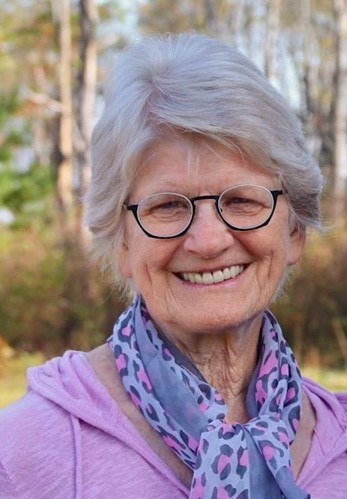 Mary Lou Weaver Houser, as an artist and spiritual director, claims gardening as a metaphor for how she intends to nurture community on many levels, whether with personal/family relationships, neighborhood diversity/spirit, creative community at church, or biodiversity in our natural world.
Mary Lou Weaver Houser, as an artist and spiritual director, claims gardening as a metaphor for how she intends to nurture community on many levels, whether with personal/family relationships, neighborhood diversity/spirit, creative community at church, or biodiversity in our natural world.
She and her husband, Rod, moved to Lancaster, Pennsylvania, in 2011, after 46 years on their family farm, to become bona fide Lancaster Downtowners!
In the city, ongoing earth care has become her spiritual practice. She keeps her hands in the soil at the Wolf Museum of Music and Art, in Community Mennonite Church’s green parking lot rain gardens, and as a volunteer with Lancaster Tree Tenders and the Lancaster Sacred Grounds initiative, through their partnership with the Lancaster Conservancy.
_______________________________________________
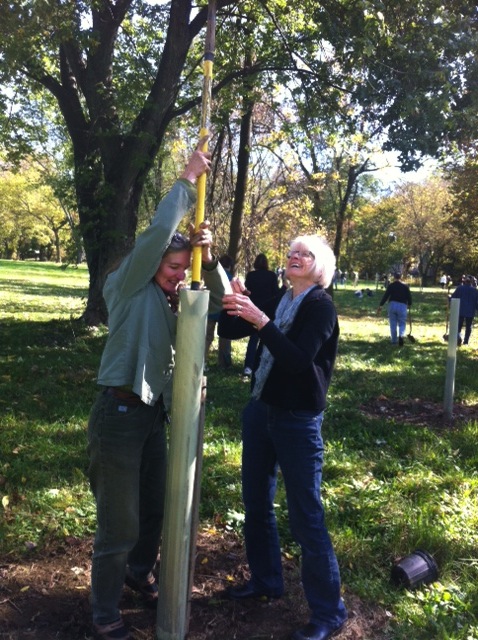
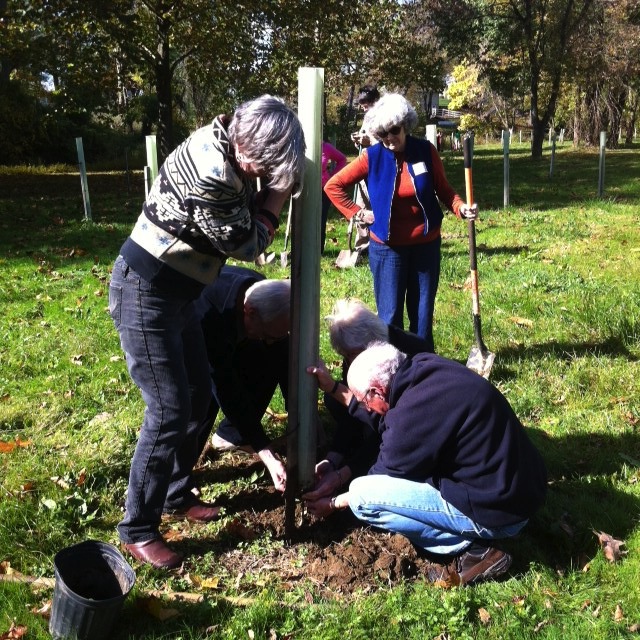
In 2014, when I turned 70, I invited 70 friends to plant 70 trees along the Millstream in Lancaster County, Pennsylvania. A catered meal followed with original tree poetry recited by Chris Longenecker, Lancaster City’s Poet Laureate from 2012-14.1 Another friend presented me with a notebook of 70 tree poems! Trees and friends from Vermont to West Virginia are a wondrous benediction for one’s life!
What is it about trees? Was it the cherry tree outside my bedroom window on our Collegeville, Pennsylvania, farm? I claimed that as “mine” in grade school, when my two older brothers refused me entry up into their white pines because of my “girl germs.” Secure in that cherry tree, I felt its striated bark as I clambered from branch to branch up to my resting place, where I tasted hardened sap that had oozed onto a nearby limb.
Or was it the weeping willows on whose slender branches we would swing after taking a running leap to grab hold? Hanging upside down in a tree, pigtails dangling, I pondered life and the sturdy leafy architecture against the sky.
In the intervening years, I have planted trees, watered them, pruned them, documented them, mapped their potential sidewalk locations for our city with the Lancaster Tree Tenders, and created a small arboretum in a native plant botanical garden at the Wolf Museum of Music and Art around the corner from our current home.
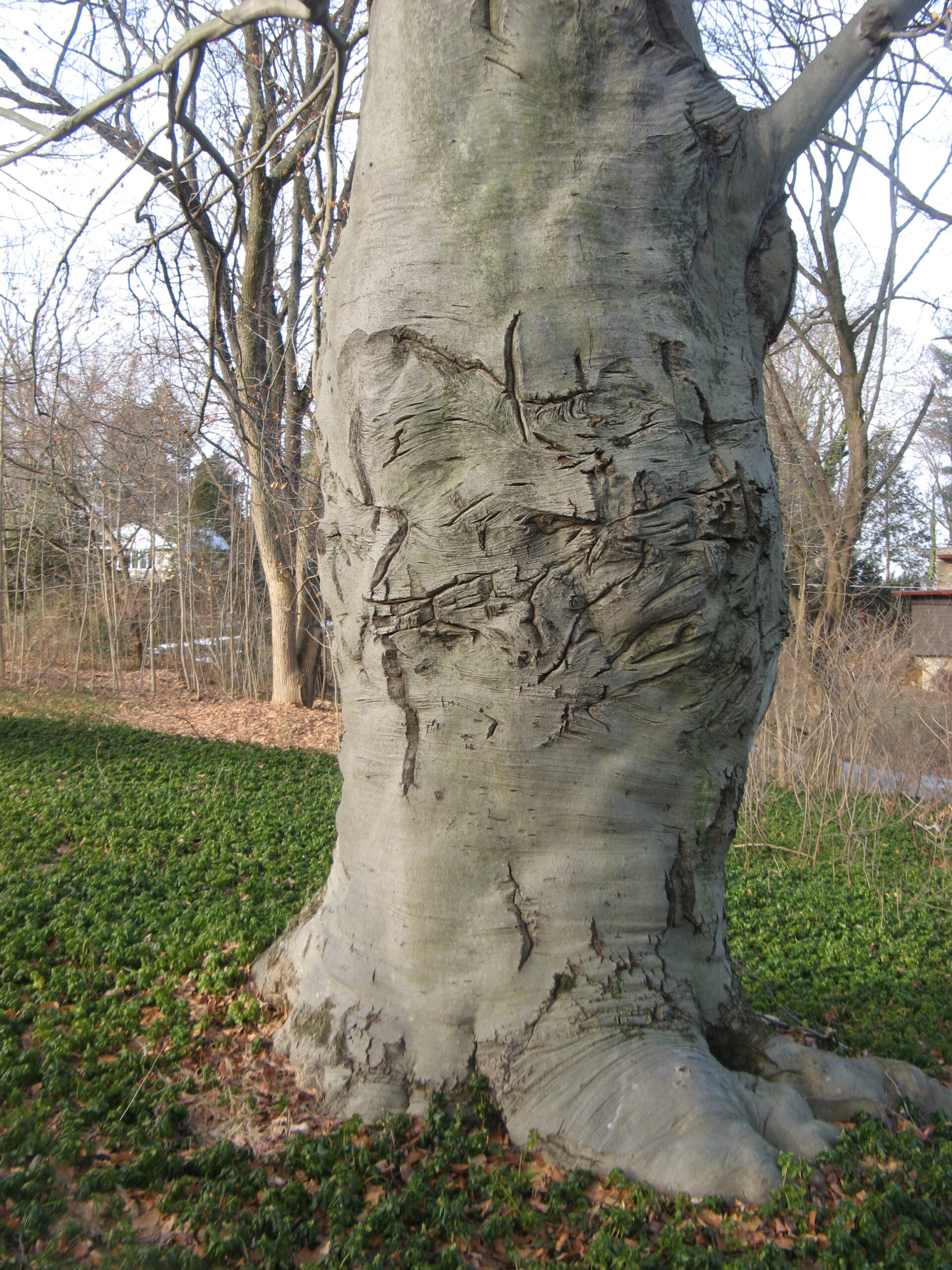
But my annual New Year silent retreats at Cranaleith Spiritual Center have tenderly altered my connection with trees. “Cranaleith,” a Gaelic word for “sanctuary of trees,” is where an ancient beech tree mentored me through multiple decisions and discoveries.
Standing against her solid trunk from which elephantine roots gripped the earth, I breathed in her phytoncides. As I imagined the subterranean mycorrhizal network of fungi beneath my feet and grounded with the electromagnetic field of her cellular structure, we bonded. Are trees sentient beings?
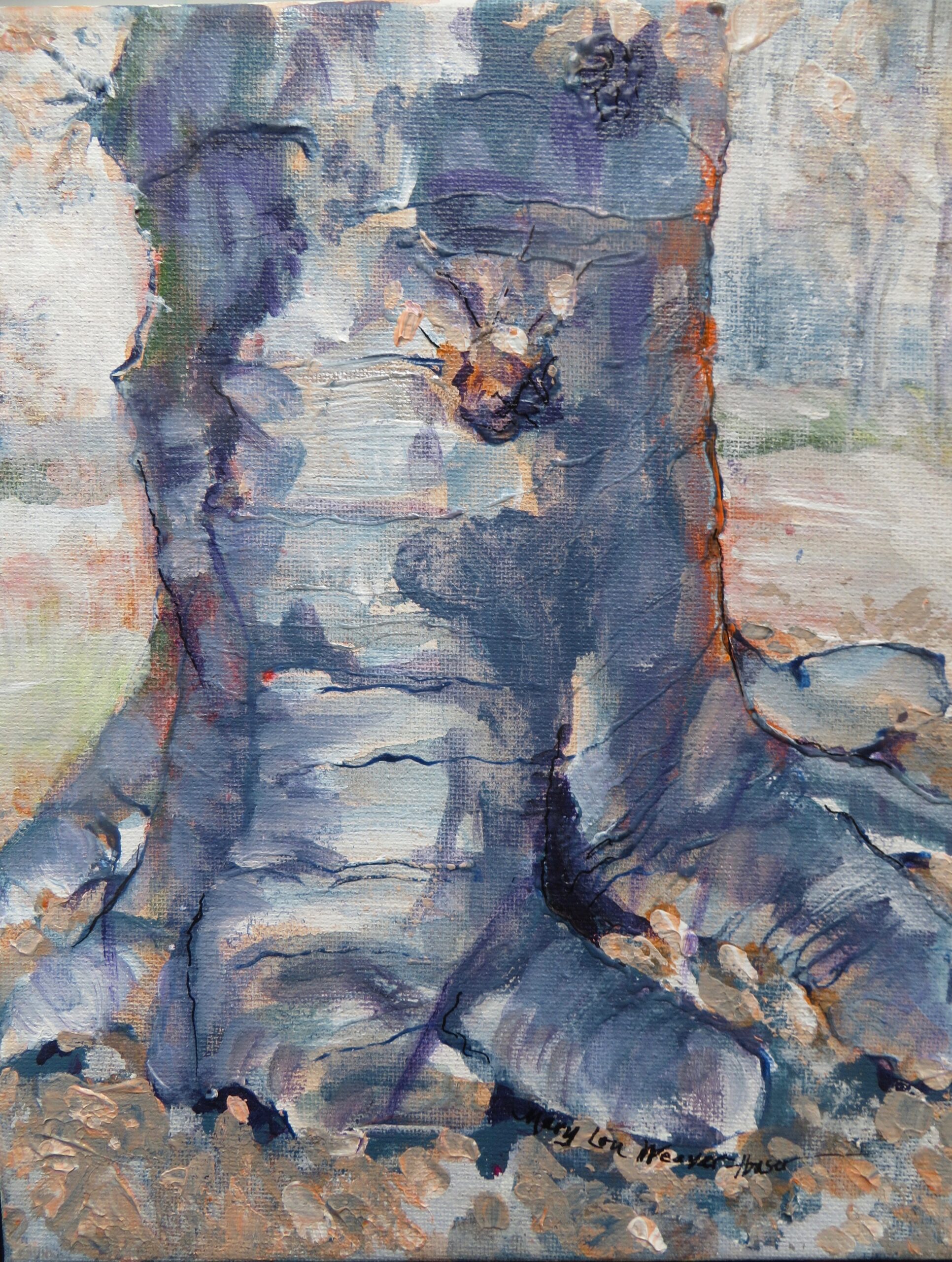
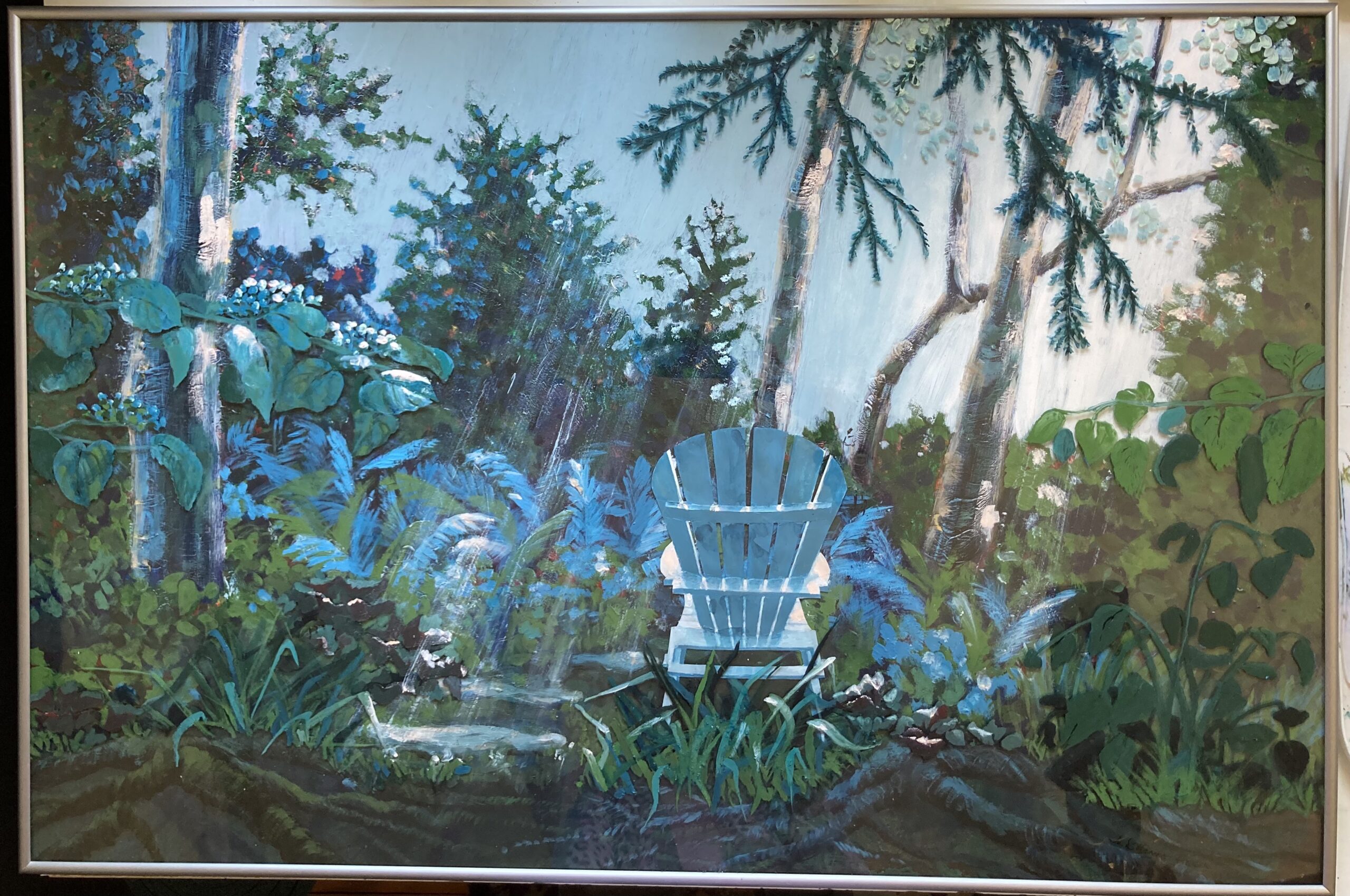
Trees literally restore our well-being and model a way to be in this world. Their complex communication systems assist weaker trees, send nutrients to younger saplings and warn of pending danger.2 At 78, I am now a “mother tree,” who offers life to the next generation. I pray that, in my 24 years as a spiritual director, I have extended shelter and sustenance to multiple species! As I tend native plants and photograph, draw, paint and learn from these elders, I do so all “for the love of her,” our sacred earth home.
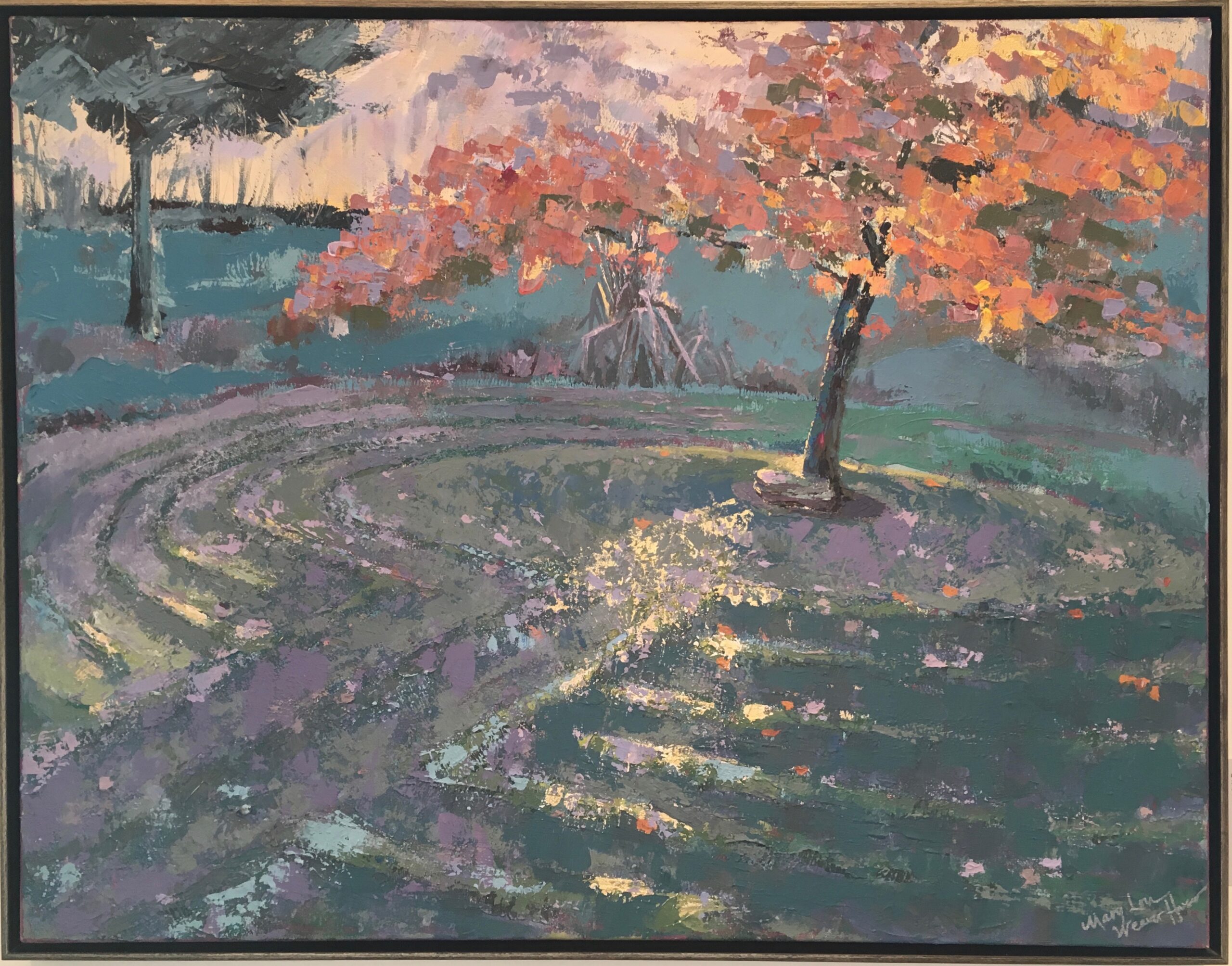 Only recently have I begun to grasp the vast biophysical and spiritual healing capacity of our plant and soil biomes, along with the wildly diverse creatures and pollinators which sustain our delicate microcosm. My art exhibit, “for the love of her,” emerged in the urgent face of escalating extinction and endangerment of these invaluable species. The palpable pain of creation’s collapse confronts me in my elemental love of nature’s beauty. And all of us suffer, in our collective unconscious, from the grief and disconnect from this divine web of life.
Only recently have I begun to grasp the vast biophysical and spiritual healing capacity of our plant and soil biomes, along with the wildly diverse creatures and pollinators which sustain our delicate microcosm. My art exhibit, “for the love of her,” emerged in the urgent face of escalating extinction and endangerment of these invaluable species. The palpable pain of creation’s collapse confronts me in my elemental love of nature’s beauty. And all of us suffer, in our collective unconscious, from the grief and disconnect from this divine web of life.
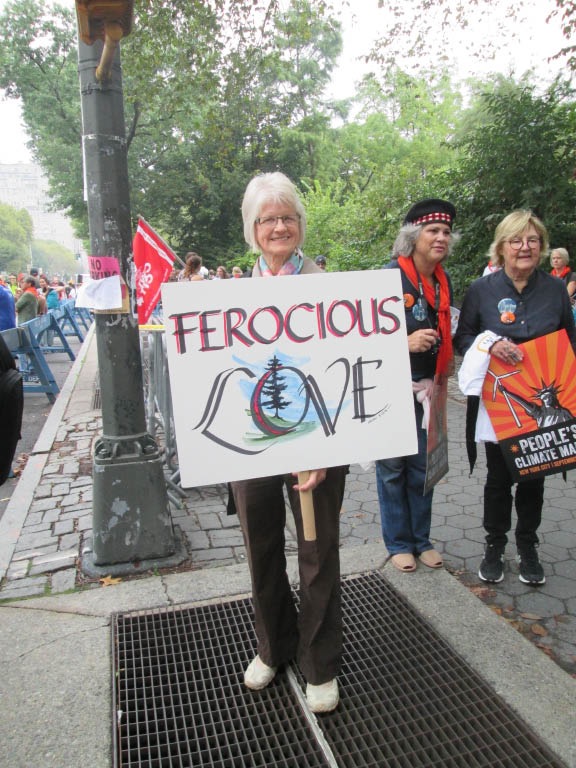
With unprecedented challenges, humans are invited to a soulful venture into the chaos of resilient transformation. We all suffer together in this time of soul-loss and unknowing. This collaborative intergenerational enterprise begins in our own neighborhoods and hearts, with ferocious love. It energizes my prayer.
1.Longenecker, Chris. How Trees Must Feel. Cascadia Publishing House LLC. 2011.
2. Simard, Suzanne. Finding the Mother Tree: Discovering the Wisdom of the Forest. Alfred A. Knopf. 2021.
Learn more about the Mennonite Spiritual Directors Network at mennosdn.org.
You can find links to the Spiritual Directors Network website and other congregational and ministerial resources on MC USA’s Church Vitality webpage: https://www.mennoniteusa.org/
The views and opinions expressed in this blog belong to the author and are not intended to represent the views of the MC USA Executive Board or staff.


